Digital Gallery Explore
Create a collage that celebrates the nursing profession
Many nurses serve with pride. Their work contributes to the well-being of communities and country, and increases the prestige of the nursing profession. Sometimes there are social, cultural, or political challenges that shape how nurses are able to serve. View the postcards as a list.
How do these postcards celebrate the nursing profession?
Examine these eight postcards that feature images of American nurses from the 20th century. Consider the challenges that influenced how nurses were able to serve. Celebrate the many nurses who have served with pride, contributed to the well-being of communities and country, and advanced the prestige of the nursing profession.
- PREVIEW and READ more about each postcard with a click
- MOVE images by-click-and-drag
- RESIZE images by dragging the bottom right corner
-

Nurses from the George A. Brewster Nurse Training School pose for a group portrait, Jacksonville, FL, 1908
Many African American nurses were trained and worked in segregated hospitals decades after the US Civil War. Martha Minerva Franklin organized a meeting of African American nurses in New York City in 1908, and formed the National Association of Colored Graduate Nurses for promoting their standing and eliminating racial discrimination in the profession.
-
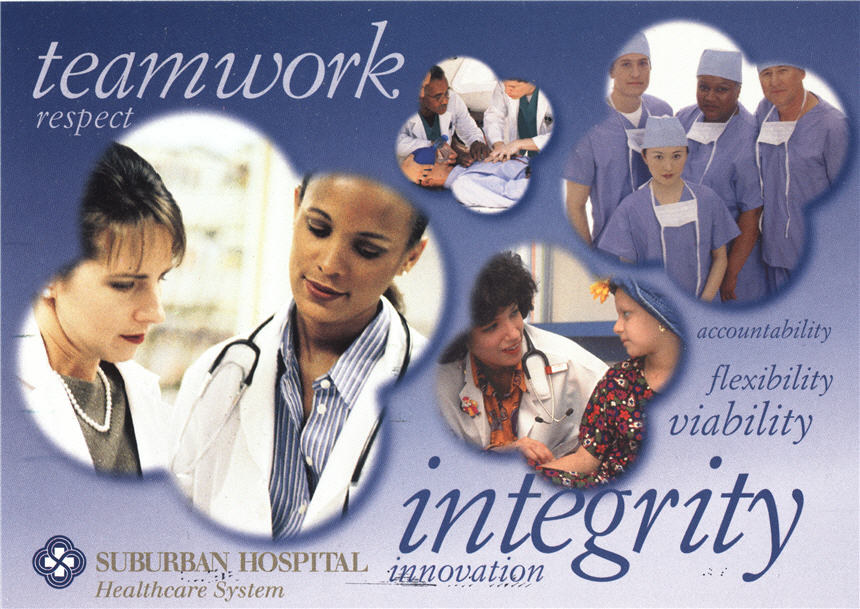
A nursing recruitment postcard, 1999
Hospital publicity in the 1990s began to present images of nurses as part of the modern health care team. This publicity image illustrates gender and racial diversity, and equality among different health care professionals.
-
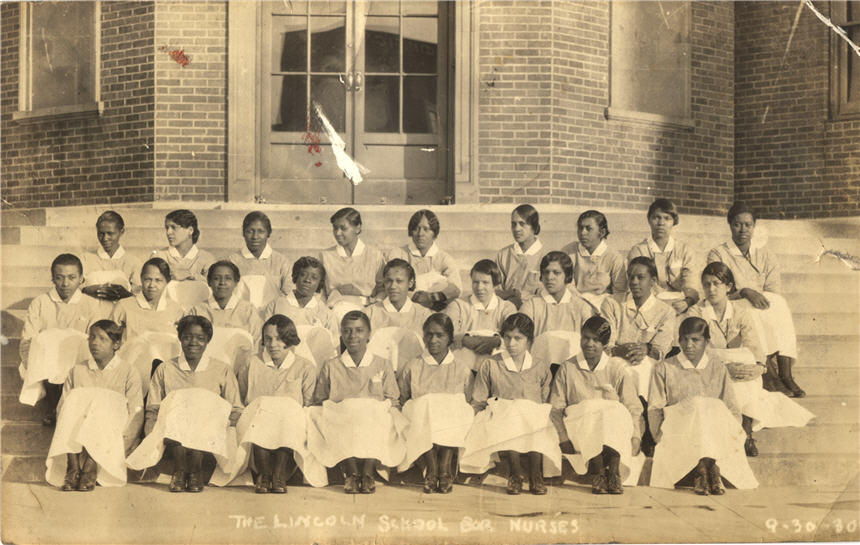
Nurses of the Lincoln School for Nurses sit for a class photo, New York, 1930
The Lincoln School was founded in 1898 as a training school for African American women. It became the Lincoln School for Nurses in 1902, and was one of only ten nursing schools for African American nurse training in the United States. The school became highly regarded as one of the top training schools for nurses in the country by the 1930s.
-
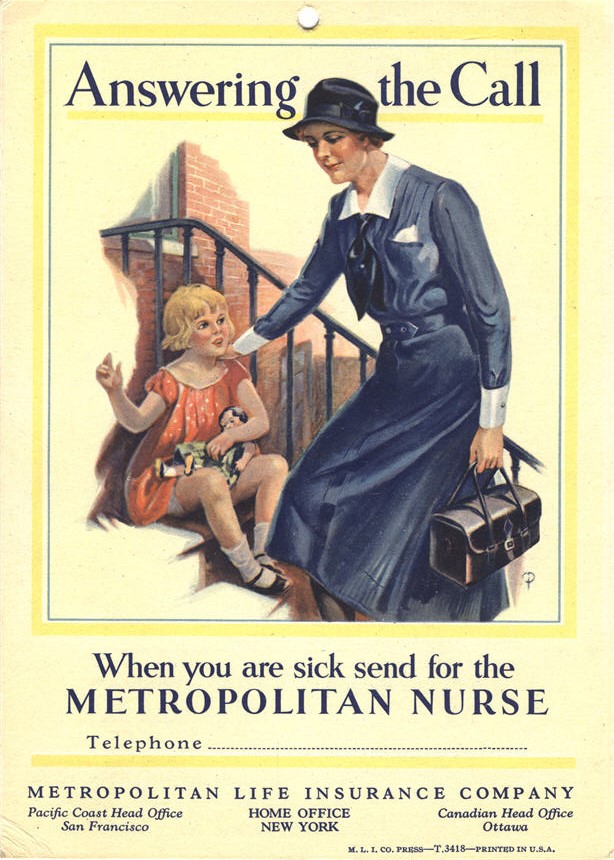
An advertisement for a private duty nurse company, 1920s
Private duty nursing became one of the first sections of the American Nurses Association in 1916. Private duty nurses visited and provided care outside of hospitals and clinics. They worked for local charitable associations, as well as were hired by private companies that marketed their skills as nurses.
-
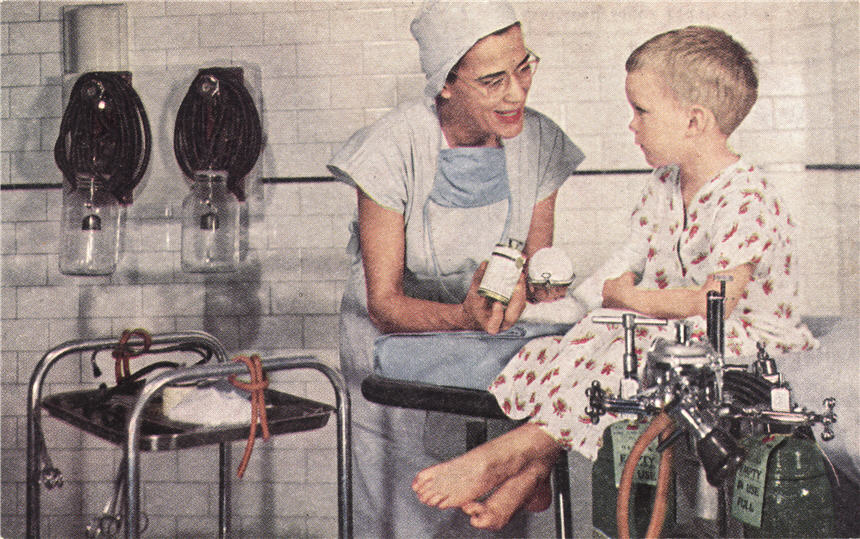
A nurse anesthetist, 1951
This photograph is a part of a 1951 series celebrating the 50th anniversary of the Army Nurse Corps, which was created by the US Congress on February 2, 1901. By the end of World War II, there were more than 59,000 Army nurses who had worked near front lines during the war and trained in specialties such as anesthesiology.
-
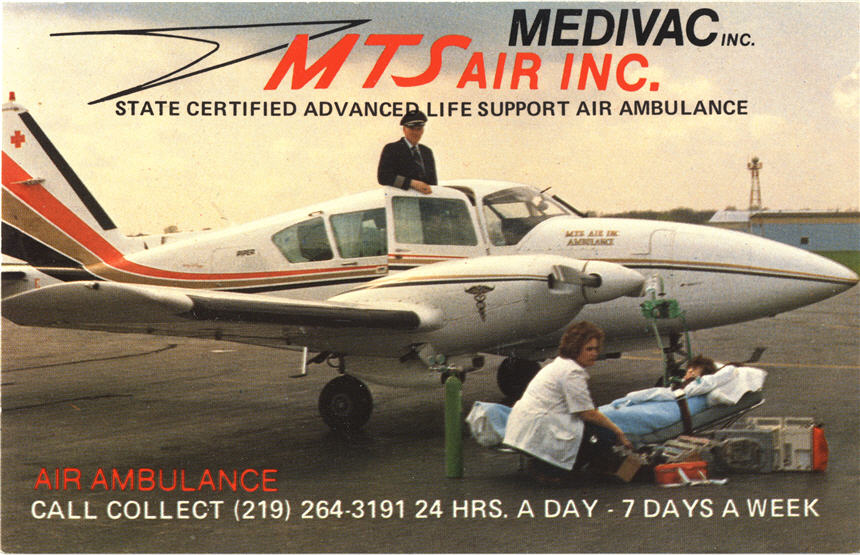
An advertisement for air ambulance service that highlights specially designed planes and trained air medical nurses, 1980s
Specialties in nursing continued to develop and expand alongside the evolving technology and health care needs of the 20th century. Air medical nurses are certified both as registered intensive care and flight nurses.
-
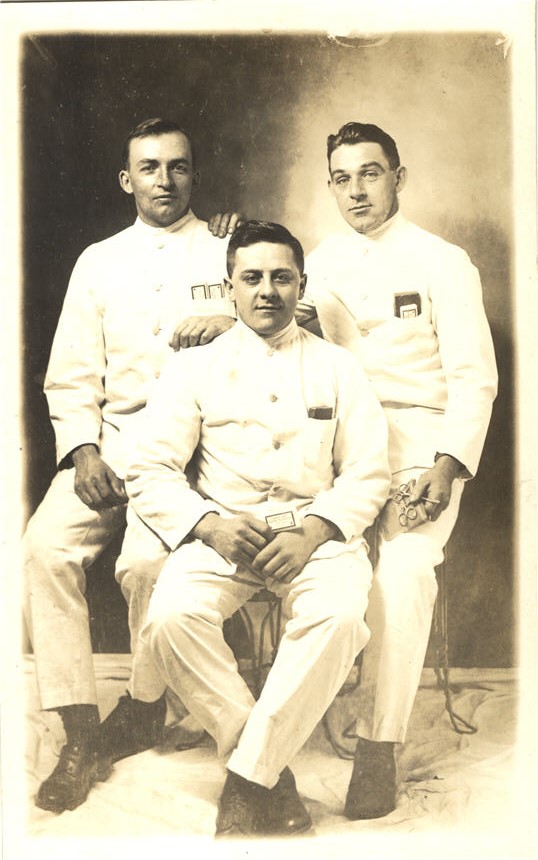
Male nurses, Lakewood, NJ, ca. 1910
The nursing uniform was a source of pride for both male and female nurses. This portrait shows three male nurses in white uniforms. Images of male nurses at this time were rare as the country focused on recruiting women to care for wounded soldiers during World War I.
-
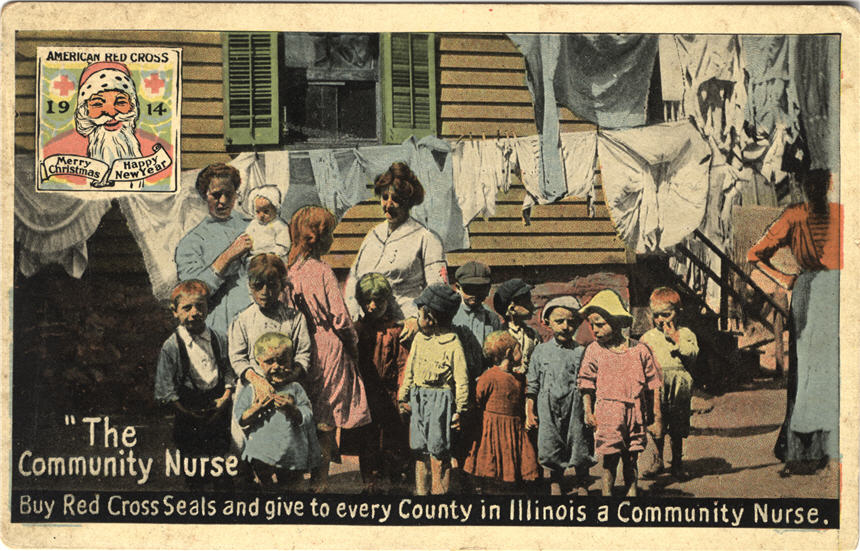
An Illinois Red Cross community nurse fund promotional card, ca. 1914
Nurses and public health nursing programs have been the cornerstones of the American Red Cross since its founding in 1881. Many of its local chapters raised funds for supporting community nurses whose concern was the health of women and children in the expanding industrial towns and cities, as well as rural areas.
-
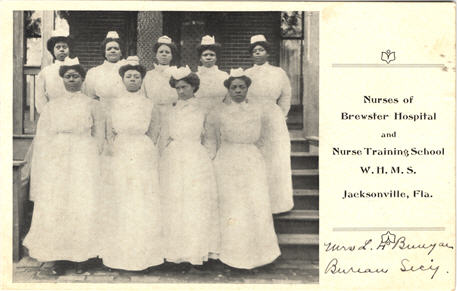
Nurses from the George A. Brewster Nurse Training School pose for a group portrait, Jacksonville, FL, 1908
Many African American nurses were trained and worked in segregated hospitals decades after the US Civil War. Martha Minerva Franklin organized a meeting of African American nurses in New York City in 1908, and formed the National Association of Colored Graduate Nurses for promoting their standing and eliminating racial discrimination in the profession.
-
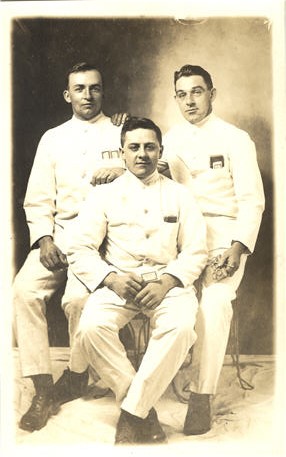
Male nurses, Lakewood, NJ, ca. 1910
The nursing uniform was a source of pride for both male and female nurses. This portrait shows three male nurses in white uniforms. Images of male nurses at this time were rare as the country focused on recruiting women to care for wounded soldiers during World War I.
-
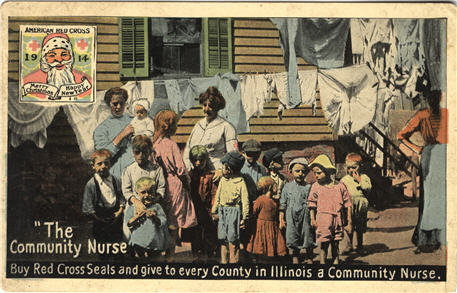
An Illinois Red Cross community nurse fund promotional card, ca. 1914
Nurses and public health nursing programs have been the cornerstones of the American Red Cross since its founding in 1881. Many of its local chapters raised funds for supporting community nurses whose concern was the health of women and children in the expanding industrial towns and cities, as well as rural areas.
-
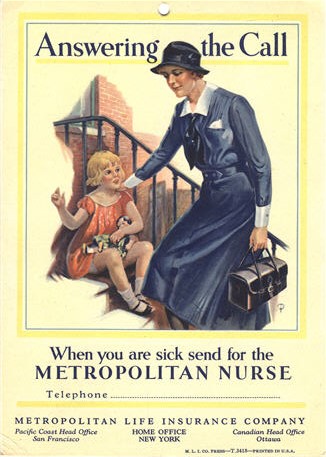
An advertisement for a private duty nurse company, 1920s
Private duty nursing became one of the first sections of the American Nurses Association in 1916. Private duty nurses visited and provided care outside of hospitals and clinics. They worked for local charitable associations, as well as were hired by private companies that marketed their skills as nurses.
-
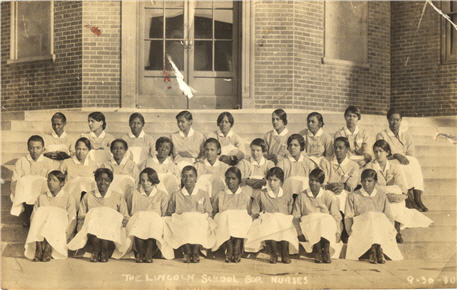
Nurses of the Lincoln School for Nurses sit for a class photo, New York, 1930
The Lincoln School was founded in 1898 as a training school for African American women. It became the Lincoln School for Nurses in 1902, and was one of only ten nursing schools for African American nurse training in the United States. The school became highly regarded as one of the top training schools for nurses in the country by the 1930s.
-
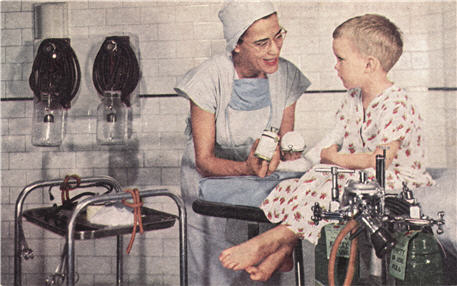
A nurse anesthetist, 1951
This photograph is a part of a 1951 series celebrating the 50th anniversary of the Army Nurse Corps, which was created by the US Congress on February 2, 1901. By the end of World War II, there were more than 59,000 Army nurses who had worked near front lines during the war and trained in specialties such as anesthesiology.
-
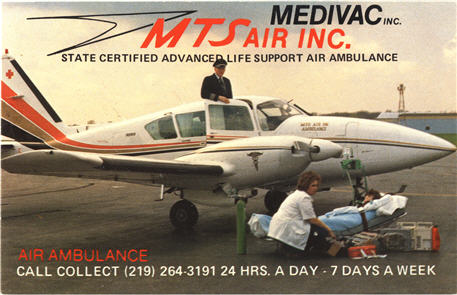
An advertisement for air ambulance service that highlights specially designed planes and trained air medical nurses, 1980s
Specialties in nursing continued to develop and expand alongside the evolving technology and health care needs of the 20th century. Air medical nurses are certified both as registered intensive care and flight nurses.
-
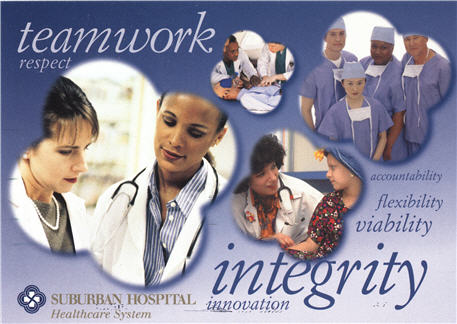
A nursing recruitment postcard, 1999
Hospital publicity in the 1990s began to present images of nurses as part of the modern health care team. This publicity image illustrates gender and racial diversity, and equality among different health care professionals.



















